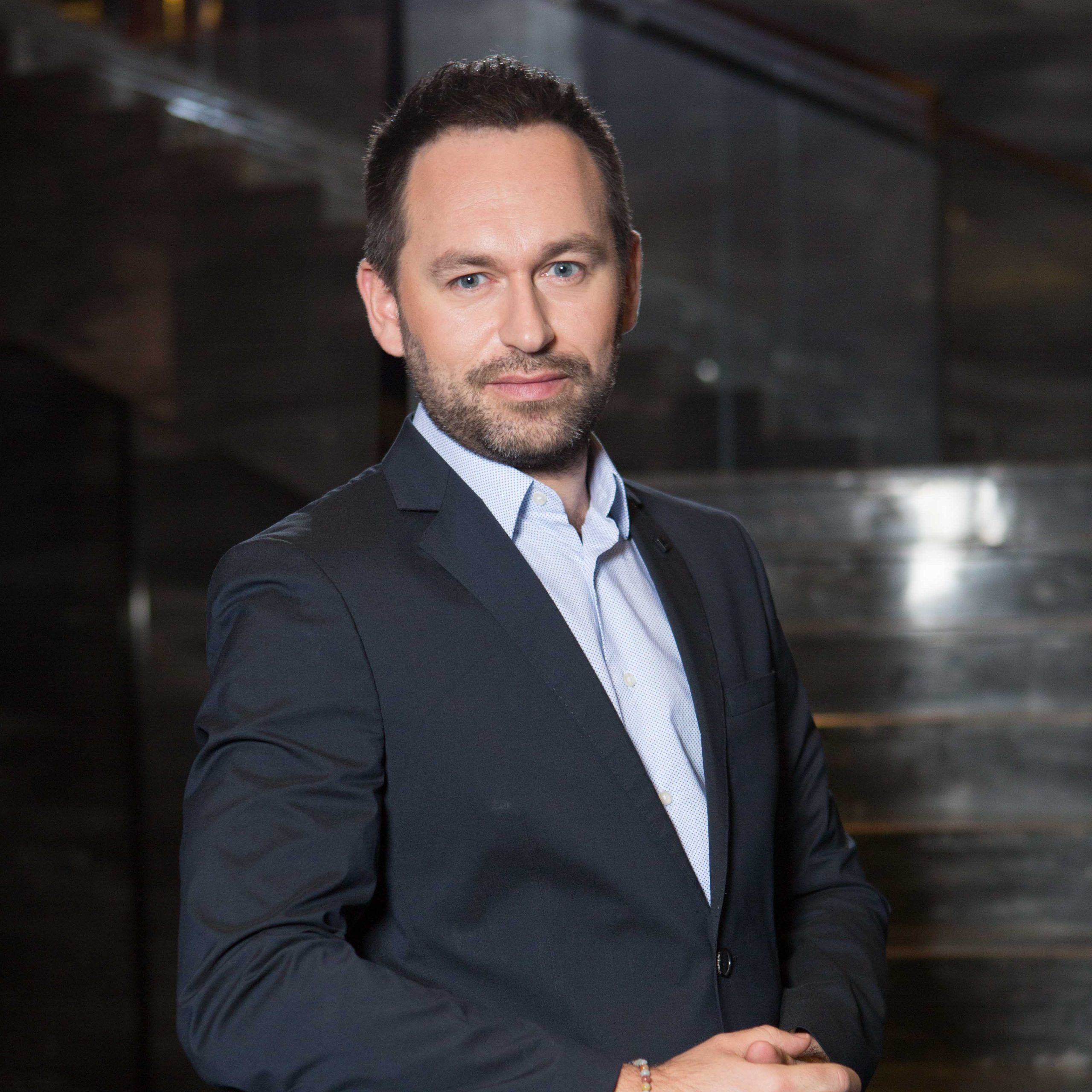In January, Stella McCartney made headlines with a move that was as much symbolic as it was strategic: she bought back the remainder of her shares after five years with LVMH, having previously spent 17 years with Kering. For an industry steeped in the gravitational pull of global conglomerates, McCartney’s decision is a reminder that independence – carefully cultivated, creatively ambitious – remains a viable and celebrated path.
Luxury fashion has long oscillated between the poles of scale and autonomy. Conglomerates like Kering and LVMH, guardians of names such as Gucci, Saint Laurent, Balenciaga, Dior, Bulgari, and Louis Vuitton, provide resources that artists of previous centuries could scarcely imagine: global supply chains, boundless marketing reach, and a platform for experimentation. Yet the enduring allure of independence – epitomised today by Chanel, Hermès, and now McCartney – lies in the freedom to safeguard heritage, define identity, and innovate without compromise. History is replete with houses that flourished by charting their own course, just as many thrived when anchored by patronage and scale; the lesson is that neither path is inherently superior.
Luxury conglomerates are not static custodians of heritage; they are active participants in reshaping the industry through acquisitions, partnerships, and leadership recalibrations. Recent months have seen L’Oréal acquire Kering’s beauty portfolio, including licences for Gucci, Bottega Veneta, and Balenciaga, in a deal worth roughly €4 billion, underscoring how licensing and strategic partnerships now complement outright ownership. Meanwhile, the pace of leadership change across the sector is remarkable: Gucci has appointed multiple CEOs and creative directors in just the past two years, while LVMH has shuffled leadership at Fendi, Kenzo, and Louis Vuitton’s China division. These changes reflect an industry where agility, vision, and governance are as critical to a brand’s success as its products. The practical effect is clear: conglomerates can deploy capital, scale, and operational expertise while simultaneously refreshing creative direction to maintain relevance across geographies and generations.
McCartney’s story, at once contemporary and timeless, embodies the subtle balancing act that has always defined luxury: the negotiation between creative autonomy, cultural influence, and operational support. It is a world where desirability is cultivated as much through meticulous craft and narrative as through global visibility; where heritage informs innovation, and where both conglomerate-backed and independent houses continue to shape the ever-evolving definition of modern luxury.
Scale, Stewardship and the Practical Upside of Conglomerates
Belmond, the curator of iconic hotels and luxury trains, has long occupied a distinctive niche in global hospitality. Founded in 1976 as Orient-Express Hotels, the company grew a reputation for meticulously restored properties that combined heritage architecture with bespoke service. Over the decades, Belmond expanded its portfolio to include landmark hotels such as Villa San Michele in Florence, Hotel Cipriani in Venice, and the Maroma Hotel in Riviera Maya, alongside its celebrated luxury trains, including the Royal Scotsman and the Venice Simplon-Orient-Express. Each property was celebrated not just for its location, but for the narrative woven into its design and programming – a lineage of storytelling that made each stay more than a room, but a journey into culture and history.
In 2019, Belmond was acquired by LVMH, a move emblematic of the strategic interplay between capital and curation in the luxury sector. Large conglomerates have the patience and scale to underwrite ten-year restorations, fund apprenticeship programmes, open museums, and launch hospitality ventures that most independent operators could only dream of. For Belmond, the LVMH acquisition has been transformative. Arnaud Champenois, Belmond’s Senior Vice President, captures the advantage plainly, telling BurdaLuxury: “Being part of the LVMH family since 2019 has been transformative for Belmond, providing a unique framework that allows us to both honour our iconic heritage and dynamically elevate it for the future.”

The value of belonging to a conglomerate is not merely financial. It is governance, discipline, and vision – the combination of operational muscle and curatorial intent. “The key lies in a collaborative, rather than a homogenising, approach,” he explains. LVMH provides the framework, but the property provides the place and the story. This approach allows for partnerships across the group’s Maisons, each collaboration “infused with a shared commitment to craftsmanship, legacy, and unique character.” It is a model that leverages scale without eroding distinctiveness – a tension that many conglomerates struggle to navigate.
The payoff is visible in the group’s hospitality projects. Champenois cites the Maroma Spa by Guerlain at Riviera Maya as a prime example: “At Maroma, A Belmond Hotel, Riviera Maya, the Maroma Spa by Guerlain is far more than a traditional spa; it is a magical ode to its location.” The partnership merges Guerlain’s wellness expertise with a profound respect for local Mayan culture and environmental stewardship, including initiatives to preserve native Melipona bees. “In these partnerships, we find a true synergy – our properties provide the enchanting location and deep-rooted sense of place, while our partners contribute their world-class expertise, allowing us to create transformative, immersive experiences that are authentically tied to their surroundings.”
Belmond also demonstrates that conglomerate-backed operations can combine preservation with reimagination. “We are thoughtfully renovating our iconic properties to safeguard their historical architecture while reimagining their spaces for the future,” says Champenois. At Villa San Michele, for example, historic structures are meticulously preserved while suites are redesigned to speak to contemporary tastes without losing the building’s storied character. Similarly, at Hotel Cipriani, architect Peter Marino’s interventions honour the hotel’s artistic and cultural significance, reinforcing Venice’s narrative rather than supplanting it.
Importantly, this work is guided by a principle of authenticity. “The guiding question for any partnership is whether it feels like a natural and authentic fit,” Champenois notes. By privileging alignment over opportunistic collaboration, Belmond avoids what might otherwise become a superficial theatre of luxury. “It is the respectful harmony that allows us to preserve our celebrated heritage while decisively elevating it for the discerning traveller of today.” The result is a model of stewardship in which scale, capital, and curatorial care converge – a blueprint of how conglomerates can expand heritage brands without sacrificing identity.
What Independents Do Best – Experimentation, Speed and Cultural R&D

Ana Andjelic, brand executive and author, says that the aspiration for conglomerates like LVMH and Kering has moved towards two areas. “The first one is exceptional services and experiences for VIP customers. Consider cruises, private parties, private shopping events, invite-only showrooms and private shopping and styling experiences.” The other is lifestyle extension: “The second one is their move into hospitality and food and drink. A number of LVMH and Kering brands operate their own hotels and restaurants, which project an aspirational lifestyle.” Think Gucci Osteria and Louis Vuitton’s Le Café V. Her observation explains why independents retain a distinctive role: where groups scale experiences, independents invent new forms of cultural capital.
If groups buy time and scale, independents buy the option to be wrong, to be small and to be experimental. That freedom is increasingly precious in a market where cultural relevance is often produced in the laboratory of risk.
Andjelic insists on the structural advantage of independence: Independent brands are in a somewhat better position as they do not have the pressure for constant profitability and scale as conglomerates do.” That lack of pressure permits experimentation: “They can be more risk-taking and experiment more in creating their own cultural capital: through content, communities, collaborations, and other cultural products.” That cultural R&D has ripple effects: it tests supply chains, new materials and narratives that groups can later scale – if picked up respectfully.
Her argument about where luxury’s meaning lies is nuanced: “Luxury has always been about both craftsmanship and identity simultaneously.” Independents often lean on place-based craft as identity: “Hermès artisanal workshops, located in France, are legendary, and are a reason for the high prices that Hermès products command.” And, by the same logic, “Bottega’s craftsmanship studios near Bologna are strong markers of both craftsmanship and identity.” These factual anchors explain why provenance still matters for desirability.
Yet Andjelic warns of overreach from groups: “By trying to be everything to everyone, they risk diluting what made them special in the first place.” Her prescription is not anti-capital: it is the call for discretion and curatorial restraint.
The Mechanics of Revival – What Buyers Look For and How Value is Protected
When groups acquire heritage houses they are buying semiotic capital – motifs, techniques, archives and the memory of desirability. Mario Ortelli, Managing Partner of the luxury M&A advisory firm Ortelli & Co., lays out what is actually being sought: “They look at the DNA and positioning of the brand, its archive of iconic designs, and awareness/reputation among consumers.” Those are the acquisition filters.

Ortelli is clear about the upside of group ownership: “A group typically can exploit revenues and cost synergies which, combined with its ability to invest, can accelerate the development of the acquired brand.” The ability to direct capital into ateliers, product development and distribution is why many houses accept group offers. But Ortelli places a necessary boundary on the deal: “It is key that the group leaves creative and communication independence to the brand in order not to dilute its ethos.”
He also acknowledges the structural challenge for independents: “The main issue for independent brands is the difficulties of those wholesale channel and the investment required to have a global relevance with their communication and retail.” That reality explains why many independents accept minority partnerships or strategic alliances rather than full exits.
Ortelli balances the picture with optimism without successful independents: “There are independent brands like The Row, Goyard, Kiton that have outstanding results and can continue to flourish independently the complex market environment.”
“There will be always space in the market for independent brands with a distinctive creativity and can create desirability among consumers thanks to their values, heritage and quality of their products,” he adds.
How Big Houses Keep Creativity Intact
Luca Solca, a senior analyst at Bernstein covering global luxury goods, offers a market-facing view that is at once tactical and hopeful: “Louis Vuitton seems further ahead, with its global recruitment campaigns (Olympic Games, Formula 1, NFL), compelling collaborations (Takashi Murakami, Coddington), innovative initiatives (The Louis).” His shorthand underlines the point: strategic cultural programming, when done well, renews archives without abandoning them.

Solca tempers that praise with a realist’s caveat: “Dior and Gucci are still in the first inning.” Revival is a process, not an event. He stresses structural advantages: “The synergies coming from being a conglomerate – bargaining power with publishers and landlords and talent management advantage – remain important.” That bargaining power matters in a world of expensive flagships and compressed media budgets. But he also admits portfolios involve risk: “Both groups have a ‘tail’ of underperforming brands.” The management task is to identify which tails can be patiently nurtured and which require radical reinvention.
Solca weighs in on the governance of balance: “The teamwork between the creative director and the chief merchandising officer.” That sentence is a capsule guide: creative vision and commercial discipline must be aligned, not antagonistic.
Sustainability, Responsibility and the Power of Scale
As luxury brands navigate an era defined by both ethical scrutiny and global ambition, questions of scale, responsibility, and heritage loom large. The industry is no longer just about craftsmanship or aesthetic; it is about how brands leverage their resources to shape culture, ethics, and long-term relevance.

Dr. Kelly Meng, reader in luxury brand management at Goldsmiths University of London, reframes sustainability not as an abstract moral exercise but as a strategic and operational imperative for luxury brands. Her framing immediately balances responsibility with pragmatism: “The simple answer is that everyone has an equal responsibility in this regard.” This insistence on parity avoids moral grandstanding, but she quickly underscores how scale amplifies impact: “But in practical terms, conglomerates should take more responsibility because the scale and global reach of their operations gives more scope for them to take the lead through research, organisation, logistics and simply setting a good example, improving the sustainability of supply chains, and shifting norms of consumer behaviour.”
This is not just theoretical. In practice, the combination of capital and operational structure allows conglomerates to fund craft communities, invest in transparent sourcing, and underwrite complex programmes that preserve endangered skills. Meng elaborates: “Leadership is not only means heightened accountability and innovation with technology or market processes, but also pioneering structural change for fairer labour practices, transparent sourcing and investment in craft communities.” The scale of these operations transform sustainability from a niche virtue into a replicable, global standard – an infrastructure for ethics as much as for commerce.
Yet she warns that scale carries risk. “Corporatisation brings efficiency and global visibility, but often at the cost of risk-taking and cultural specificity.” Luxury, she notes, thrives on identity and nuance; when short-term metrics dominate, “Creative purpose suffers when short-term metrics dictate long-term identity.” Here, Meng signals the fine line that conglomerates must tread: operational efficiency should never override creative DNA.
Meng’s prescription for heritage revival is both elegant and practical: “By making it living, not static. Heritage isn’t just about preservation; it’s about transmission and evolution.” This approach redefines conservation not as ossification but as active stewardship: through apprenticeships, reimagined collections, and thoughtful reinterpretation of classic codes. Heritage becomes a lens through which brands innovate responsibly, ensuring that history informs creativity rather than constraining it.
In essence, Meng reframes the debate: the question is not whether conglomerates or independents are better, but how each can play to its strengths. Conglomerates, when managed with curatorial care, have the capacity to preserve and elevate craft, heritage, and ethics at a scale that independently owned houses cannot. Independents, meanwhile, remind the industry that desirability stems from risk-taking, identity, and cultural capital. Together, they define the modern luxury landscape – complementary forces in a centuries-old story of craft, culture, and commerce.
Asia, Generational Change and the Attention Economy
Asia remains both opportunity and test bed. Solca’s market realism is blunt: “Weak Chinese demand is hurting everyone. Those who had pushed too much – like Gucci – all the more so.” The practical implication is that groups can rebalance investment across geographies; independents must be nimble in format and local know-how.
Generational shifts add another vector. Meng explains: “Gen Z and Gen Alpha aren’t just buying products – they’re buying into stories, values, and identities.” Brands must thus build traceability, storytelling and community – whether they are scaled or small.
Finally, Ana Andjelic nails the commercial turn: “It is always good for a brand to be creative, but creative autonomy is one of the factors that determine brand desirability.” That autonomy is the hinge on which future desirability spins.
What does an optimistic, workable synthesis look like? It begins with governance. Acquisition contracts and minority investments must include creative covenants. Groups should set aside multi-year craft budgets ring-fenced from marketing P&Ls. Independents considering capital should prioritise partners who accept editorial charters and apprenticeship commitments.
The luxury field is not choosing sides. It is designing new institutions. Some houses will flourish under the care of groups; others will continue to prove that independence is a viable, powerful choice. The best outcomes are not ideological wins for camp or creed but negotiated syntheses in which capital funds craft and craft insists on being respected. The industry’s future depends less on the ownership chart and more on how both sides structure power: who gets to make decisions about craft, who funds the long arc of training, and who keeps creative autonomy sacrosanct.
Stella McCartney’s buyback is emblematic because it asserts choice. Belmond’s hospitality programmes are exemplary because they show scale used to amplify place. Analysts, advisors and academics are right to insist on governance protections because the work of preserving heritage and producing desirability is painstaking, slow and, when done well, generative.
If the coming decade rewards anything, it will be those actors who treat stewardship as a craft in its own right.
BurdaLuxury’s Lens
Social media has transformed fashion into what Glenn Martens described on an episode of The Business of Fashion Podcast as a “Hunger Games” of visibility. In this environment, attention is the ultimate currency, and brands are challenged not just to be seen, but to be meaningfully remembered. The risk is that constant exposure becomes noise, eroding the very desirability that luxury relies on.
Luxury experiences, including hospitality collaborations, offer a practical way to slow down the race for attention. By creating immersive, authentic content – from artisanal residencies to narrative-driven wellness programmes – brands can transform fleeting social media moments into long-form cultural capital.
Ultimately, in an era dominated by algorithmic exposure, the brands that endure will be those that combine reach with curated meaning, protecting creative independence while leveraging resources to make attention count. Success will favour those who invest in craft, culture, and story – not just spectacle.




